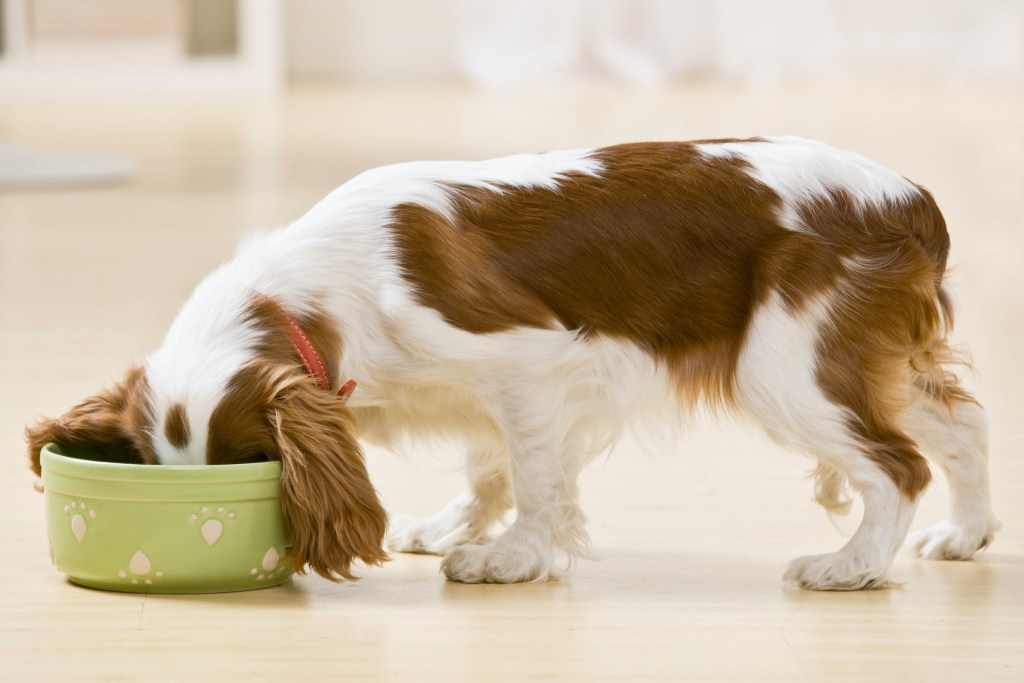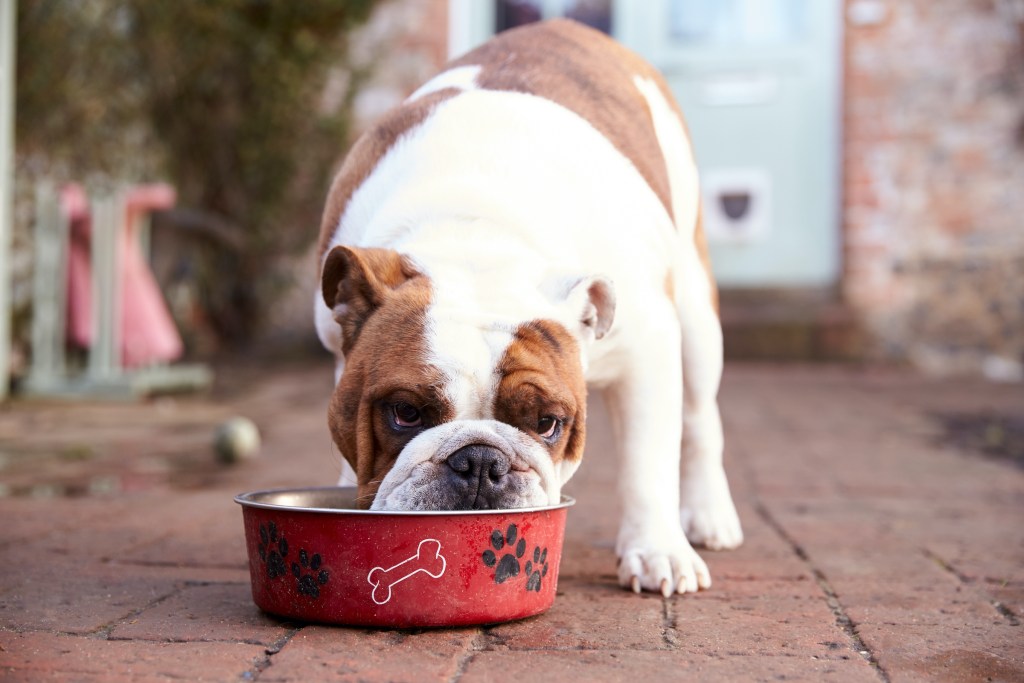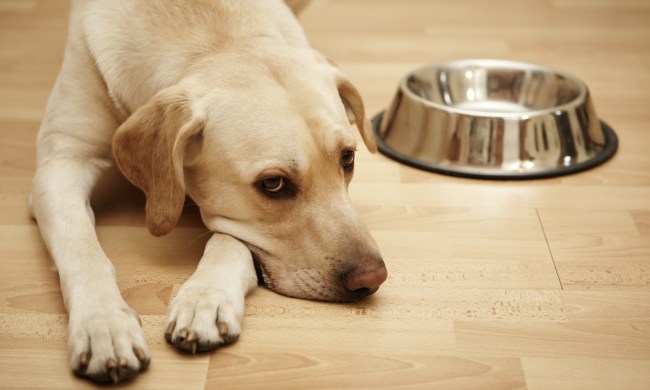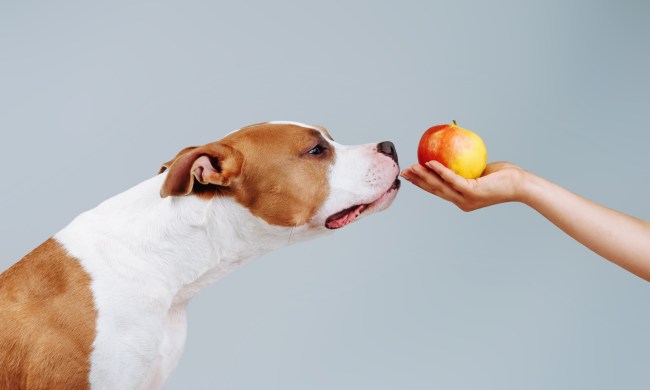To buy or not to buy (dog food) — that is the question. Many pet parents want to give their pet healthy, homemade dog food for a variety of reasons, and they’ll be happy to know that meal prepping for dogs doesn’t have to be difficult. It can be quick for you and nutritious for your pup; just make sure you talk to your trusted veterinarian before making any changes to your best buddy’s diet.
Homemade dog food recipes are everywhere, but how do you know which are the best for your beloved pet? The Veterinary Centers of America urge pet parents to make sure to look for a balanced list of ingredients that contains proteins, fats, carbohydrates, vitamins, and minerals. These recipes are some of our favorites, and they can be great resources for building your pup’s own homemade dog food.
Basic recipe by MSPCA-Angell Boston Animal Medical Center
This build-your-own recipe uses general food categories (like “protein” or “vegetables”) so you can choose the ingredients that best fit your dog’s dietary needs. This online guide also gives you many ideas for dog-safe ingredients in each category, so don’t worry if you don’t know where to begin!
Keep in mind while reading through this guide that the numbers are fixed to work for a 15-pound pooch. If your dog is a different size, there are resources to help you adjust the measurements. There are also sample heating and serving instructions, so you’ll have guidance every step of the way.
If you’re looking for more specific recipes, though, check out the following four.

Tuna and vegetable dog food — Dr. Charlotte Williamson, BVSC, MPHTM
If you’d like to try a different protein source for your four-legged pal, seafood for dogs can be an easy and satisfying option. Though this veterinarian-sourced recipe calls for tuna, many animal health experts recommend staying away from this specific fish. Microscopic amounts of mercury can sometimes be present in tuna, so salmon or whitefish can be great alternatives. If you do go with tuna, though, make sure it’s canned!
Ingredients:
- Canned tuna in water or brine, drained
- Potato, scrubbed or peeled
- Cauliflower
- Green beans
- Extra virgin olive oil
- Psyllium powder
Psyllium powder is a form of fiber that may also be found in some dog dietary supplements. This nutrient is an important piece in creating a well-balanced diet for your canine, so don’t overlook it!
Chicken, rice, and vegetable dog food — Dr. Charlotte Williamson, BVSC, MPHTM
No matter what recipe you use, your vet will likely recommend investing in a dietary supplement for your four-legged friend. Most come in an easy-to-use powder that you can mix into every meal, and each has its own blend of vitamins and minerals to help your dog stay healthy and happy.
This simple chicken recipe from Dr. Williamson uses the following ingredients:
- Chicken breast
- Brown rice
- Broccoli
- Carrots
- Peas
- Extra Virgin Olive Oil
- Psyllium Powder
As with any recipe, read up on the measurements’ specifics before serving to your pup. You need to make sure your dog is getting the nutrition they deserve, after all!
Turkey dog food from Northwest Holistic Pet Care
What makes this recipe unique is its use of the whole turkey. Well, more than just the meat, anyway. It also calls for several tablespoons of turkey organ meat, which can include the gizzard, liver, or heart. Many butcher shops and grocery stores carry these, so don’t worry about hard-to-find ingredients.
Speaking of ingredients, you’ll be using:
- Boneless ground turkey thigh
- Turkey organ meat
- Finely-grated dog-safe veggies
- Ground raw sunflower seeds
- Coconut oil
- Salmon oil
- Calcium citrate supplement (*must include this)
For this recipe, you’ll start by blanching your veggies and heating your turkey (meat and organs) until fully cooked. Once you chop, grind, or process your vegetables you’re just one mix away from making your pup a delicious meal.

Walkerville Vet raw homemade dog food
If you’re interested in starting your dog on a raw diet, be sure to choose a fresh red meat, like lamb or beef, instead of using poultry in your recipe. This site also recommends mixing in an appropriate vitamin and mineral supplement, which your veterinarian can suggest.
Here’s what else you’ll need:
- Chopped beef or lamb
- Chopped carrots
- Chopped apple
- Frozen peas, defrosted
- Chopped pumpkin or squash
- Brown or basmati rice
- Sunflower oil
- Fish oil
Preparing this food is easy too. You’ll want to cook your rice and pumpkin, mix them, and let them cool before adding the rest of your ingredients. Check out Walkerville Vet’s site to find your pet’s perfect portion size.
Dog-approved cuisine!
With these five homemade dog food recipes under your belt, you’re more than ready to get started cooking for your furry best friend. Most of these ingredients are easy to find, too, so there’s nothing standing in your way — except getting the OK from your vet, of course! Once they give the thumbs up, though, your culinary adventure can begin. “Bone” appétit!



